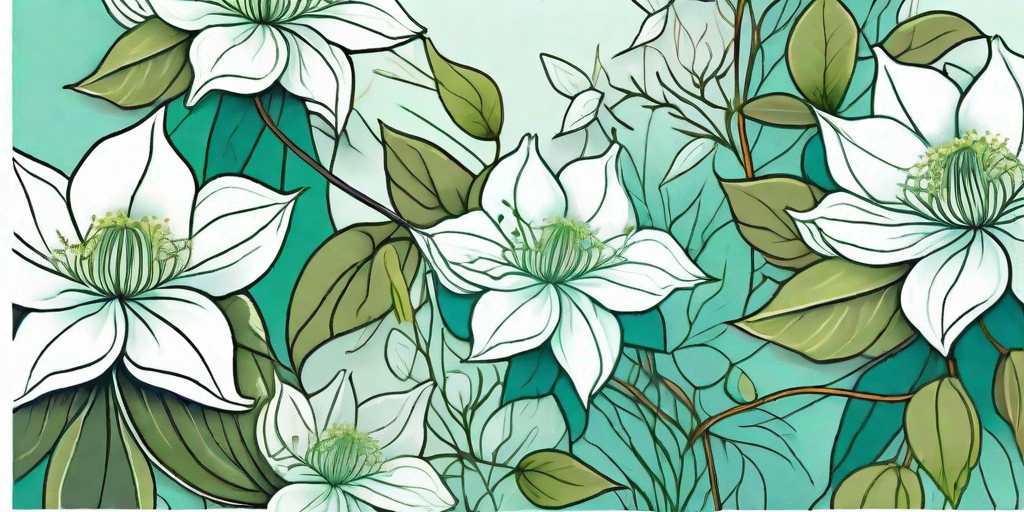
Ah, the clematis. A plant of such beauty and grace, it's often referred to as the 'queen of climbers'. But how do you cultivate this royal vine, and when can you expect to see it in all its blooming glory? Buckle up, green thumbs, because we're about to embark on a journey of botanical discovery.
Understanding the Clematis
Before we dive into the world of clematis cultivation, let's take a moment to appreciate this plant's unique characteristics. Clematis is a genus of about 300 species within the buttercup family. These plants are primarily known for their vibrant flowers, which can range in color from purples and pinks to whites and yellows. But it's not just their beauty that sets them apart. Clematis plants are also known for their climbing ability, using leaf-stalks to coil around trellises and other supports.
There are three main types of clematis: early-flowering, late-flowering, and evergreen. Each type has its own unique blooming period and care requirements. So, whether you're a seasoned gardener or a budding horticulturist, there's a clematis out there for you.
Planting and Caring for Your Clematis
Choosing the Right Spot
Like a sunbathing beauty, clematis plants love the sun. However, their roots prefer a cool, shady spot. So, when choosing a location for your clematis, look for a place where the plant can get at least six hours of sunlight each day, but where the roots can be shaded by other plants or a layer of mulch.
It's also important to choose a spot with well-drained soil. Clematis plants don't like to have 'wet feet', and can develop root rot if the soil is too wet.
Planting Your Clematis
Once you've found the perfect spot, it's time to plant your clematis. Dig a hole that's about twice as wide and twice as deep as the pot your clematis came in. Place the plant in the hole, making sure the top of the root ball is level with the ground. Then, backfill the hole with soil, firming it gently around the base of the plant.
After planting, give your clematis a good drink of water, and apply a layer of mulch around the base of the plant to help keep the roots cool and moist.
Caring for Your Clematis
Clematis plants aren't too demanding, but they do require some care to keep them looking their best. Regular watering is essential, especially during dry periods. It's also a good idea to feed your clematis with a balanced fertilizer in the spring and again in the summer to promote healthy growth and flowering.
Pruning your clematis will depend on the type you have. Early-flowering types usually don't require much pruning, while late-flowering types benefit from being cut back in early spring. Evergreen types should be pruned after flowering to maintain their shape.
When to Expect Blooms
One of the most exciting parts of growing clematis is waiting for the first blooms to appear. But when can you expect to see these floral fireworks? Well, that depends on the type of clematis you have.
Early-flowering clematis typically bloom in late winter or early spring, while late-flowering types bloom in the summer or fall. Evergreen clematis, as the name suggests, provide year-round interest with their glossy green leaves, but their flowers usually appear in the spring.
Common Clematis Problems and Solutions
Wilting Leaves
If your clematis leaves start to wilt, it could be a sign of clematis wilt, a fungal disease that can cause the entire plant to collapse. If you notice wilting, cut back the affected stems to ground level, and dispose of them properly. Don't worry, your clematis should bounce back with new growth.
Yellow Leaves
Yellow leaves can be a sign of a nutrient deficiency, often a lack of iron. To remedy this, apply a chelated iron fertilizer to your clematis according to the package instructions.
Frequently Asked Questions
- Can I grow clematis in a pot?
Yes, clematis can be grown in pots, but make sure to choose a large pot and a clematis variety that's suitable for container growing.
- How fast does clematis grow?
Most clematis varieties grow quite quickly, often adding several feet of growth in a single season.
- Do deer eat clematis?
Deer can eat clematis, but they usually prefer other plants. To deter deer, try planting deer-resistant plants around your clematis.
And there you have it, a comprehensive guide to the clematis, your garden's crown jewel. With a little care and patience, you'll be rewarded with a stunning display of blooms that will make your garden the envy of the neighborhood. Happy gardening!















